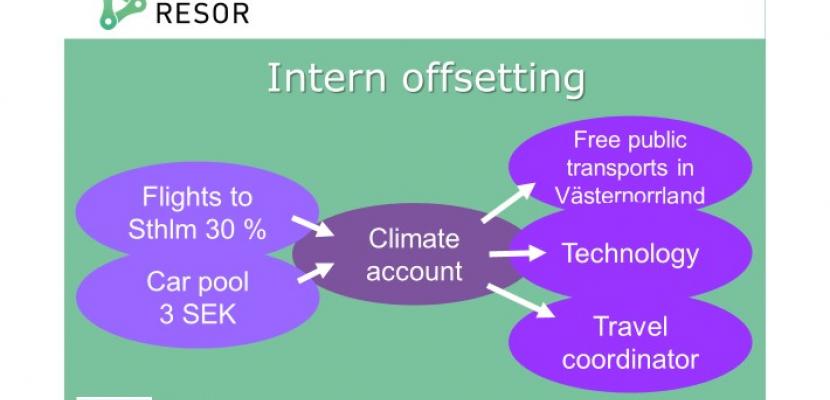Image

Sustainable travels – successfully implementing policy and praxis
Published on 24 August 2018

Sweden
Mellersta Norrland
This is the good practice's implementation level. It can be national, regional or local.
About this good practice
The key to lower emissions related to travel within organisations, is raising awareness, getting employers committed to goals and the change of habits. This gives multiple positive added values apart from the reduction of CO2 emissions, such as lowered cost, mitigated stress levels and improved health. This is the main conclusion the County of Västernorrland drew from the project within sustainable travels in 2012-2014.
A travel policy, support from travel advisors and a successfully implemented tailor made information- and campaign plan helped the organisation to attain the goals within the time frame. The county of Västernorrland has chosen to use internal climate compensation by stimulating climate-smart business travels and adding an additional cost to climate-related travel. For example, the flights between Sundsvall/Härnösand and Stockholm received an internal mark-up with 30 percent of the price, and for driving the county's cars the mark-up was 3 SEK extra per km. The extra fees from these travels is managed through a newly established internal climate account, and the fund finances a travel advisor and parts of the regional public transport. “Recently performed surveys shows that our work with sustainable travels and virtual work meetings reduced CO2 emissions by 30 percent” says Olle Bertilsson, environmental manager.
The travel policy has a clear environmental perspective. When possible, distance meetings should be chosen instead of physical meetings.
A travel policy, support from travel advisors and a successfully implemented tailor made information- and campaign plan helped the organisation to attain the goals within the time frame. The county of Västernorrland has chosen to use internal climate compensation by stimulating climate-smart business travels and adding an additional cost to climate-related travel. For example, the flights between Sundsvall/Härnösand and Stockholm received an internal mark-up with 30 percent of the price, and for driving the county's cars the mark-up was 3 SEK extra per km. The extra fees from these travels is managed through a newly established internal climate account, and the fund finances a travel advisor and parts of the regional public transport. “Recently performed surveys shows that our work with sustainable travels and virtual work meetings reduced CO2 emissions by 30 percent” says Olle Bertilsson, environmental manager.
The travel policy has a clear environmental perspective. When possible, distance meetings should be chosen instead of physical meetings.
Resources needed
App 3 million SEK. The main part of this budget comes from the internal climate compensation.
Evidence of success
• The number of flights has been reduced by 71%
• The number of internal car rentals by 15 %
• The use of bus and train services has increased by 120 %
• The CO2 emissions are cut by 30% due to the change of policy
• The number of internal car rentals by 15 %
• The use of bus and train services has increased by 120 %
• The CO2 emissions are cut by 30% due to the change of policy
Potential for learning or transfer
Most organisations can introduce internal climate compensation. The system comes close to being cost neutral over time. Charges are imposed on poorer transport options. Sustainable options get better conditions. In Västernorrland this method is currently used in a regional project for transferring and adapting the model to different local conditions in the county's municipalities.
Good practice owner
You can contact the good practice owner below for more detailed information.
Organisation
The County of Västernorrland

Sweden
Mellersta Norrland